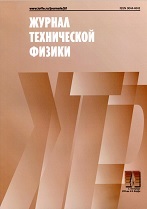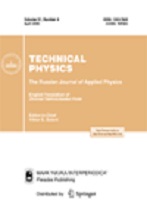|
This article is cited in 3 scientific papers (total in 3 papers)
Experimental instruments and technique
Simulation of the sensor response of vacuummeters with sensitive elements based on multicomponent oxide nanomaterials with the fractal structure
I. A. Averina, S. E. Igoshinaa, A. A. Karmanova, I. A. Pronina, V. A. Moshnikovbc, E. I. Terukovd
a Penza State University
b Peter the Great St. Petersburg Polytechnic University
c Saint Petersburg Electrotechnical University "LETI"
d Ioffe Institute, St. Petersburg
Abstract:
We have proposed a mathematical model of the sensor response of vacuummeters with sensitive elements based on broadband semiconductor oxide with electrical conductivity of the $n$- and $p$-type, as well as the multicomponent oxide systems. The correctness of the model description of the dependence of the resistivity of nanomaterials synthesized by the sol–gel method and has the structure of spherical aggregates of fractal origin on the ambient pressure has been demonstrated. It has been shown that, taking into account the corrections, the developed model can be used to qualitatively describe the sensor response of nanomaterials based on two-component SiO$_2$–SnO$_2$ oxide systems with a labyrinth structure.
Received: 08.11.2016
Citation:
I. A. Averin, S. E. Igoshina, A. A. Karmanov, I. A. Pronin, V. A. Moshnikov, E. I. Terukov, “Simulation of the sensor response of vacuummeters with sensitive elements based on multicomponent oxide nanomaterials with the fractal structure”, Zhurnal Tekhnicheskoi Fiziki, 87:5 (2017), 780–787; Tech. Phys., 62:5 (2017), 799–806
Linking options:
https://www.mathnet.ru/eng/jtf6245 https://www.mathnet.ru/eng/jtf/v87/i5/p780
|


|





 Contact us:
Contact us: Terms of Use
Terms of Use
 Registration to the website
Registration to the website Logotypes
Logotypes








 Citation in format
Citation in format 
